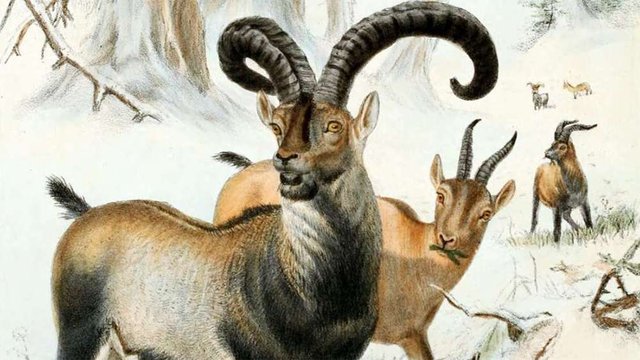The Eccentric "Extinction" of the Pyrenean Ibex

(A sketch by Joseph Wolf in the possession of Lady Brooke)
You've probably heard of extinction, the death of the last living individual of a species. You've probably heard of extinct animals such as the velociraptor, the dodo bird, and the passenger pigeon. But have you ever heard of an animal going extinct twice? Such is the case of the bucardo, also known as the Pyrenean Ibex.
The following is lifted from the original article by IFL Science (link for the original article is http://www.iflscience.com/…/this-is-the-only-animal-to…/all/):
"Extensive breeding efforts took place throughout the 1980s but it was too little too late. By 1997, just one bucardo was left. Rangers found this remaining individual, a 13-year-old female named Celia, mangled beneath a fallen tree in a remote part of Ordesa National Park in January 2000.
Alberto Fernández-Arias, a wildlife veterinarian who had previously researched the reproduction of the Spanish ibex, captured this female 10 months before her death using a blowpipe, and took cell samples from her ear and flank. These cells were taken back to a lab where they were cultivated and then exposed to deep-freeze cryopreservation.
Using Alberto's expertise in Spanish ibex reproduction, a team of French and Spanish scientists led by Jose Folch began working with these sacred cells left by Celia. You can read the ins and outs of the scientific study in the rather obscure journal Theriogenology. After some delay, it was eventually published in 2009.
The team injected nuclei from the bucardo’s cells into goat eggs that had been emptied of their own genetic material. They then implanted these eggs into hybrids of Spanish ibex and domestic goats. They managed to implant 57 embryos. However, just seven of these hybrids became pregnant and six eventually miscarried. One, however, was a success.
Against all odds, a female bucardo kid was born on July 30, 2003.
“I pulled out the little bucardo. For that moment, it was the first time in history that an extinct animal was brought back alive,” Alberto added.
Humanity had defeated extinction for the first time. Albeit very, very briefly.
“As soon as I had the animal in my hands, I knew it had respiratory distress. We had oxygen and special drugs prepared, but it could not breathe properly. In seven or 10 minutes, it became dead.”
The story did not hit the public's imagination until 2009 when the scientific study was published. By then, the money had dried up and many of the researchers had parted ways. It seemed the bucardo was to remain extinct once more."
Do you agree that the Pyrenean Ibex indeed go extinct twice? Let me know in the comments below. :D
Take care,
Virtual Self
That was such a short sliver of hope. It was just sad that these animals had survived for a long time through all of nature's challenges but did not survive humans and all of the drastic changes we brought. Hopefully in the near future we can devise techniques and practices to better preserve biodiversity.